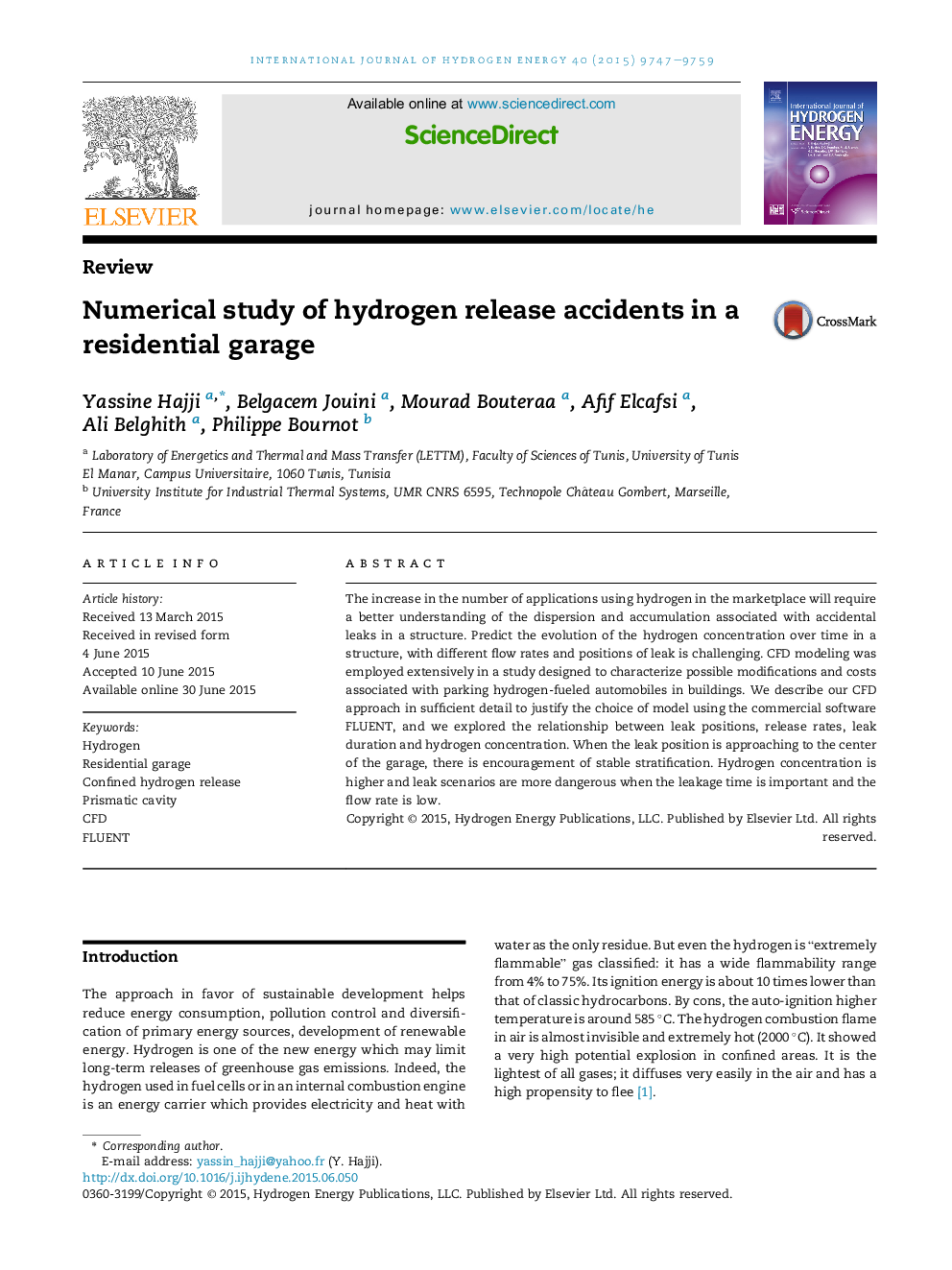| Article ID | Journal | Published Year | Pages | File Type |
|---|---|---|---|---|
| 1274868 | International Journal of Hydrogen Energy | 2015 | 13 Pages |
•We model dispersion and accumulation of hydrogen during a leak in a prismatic garage.•This study looks at effects of the leak position, the mass flow rate and the leak duration.•When the source is approaching to the center, the stratification is stable.•When the mass flow rate is low, hydrogen concentration are higher.•When the leakage time is important, hydrogen concentration are higher and leak scenarios are more dangerous.
The increase in the number of applications using hydrogen in the marketplace will require a better understanding of the dispersion and accumulation associated with accidental leaks in a structure. Predict the evolution of the hydrogen concentration over time in a structure, with different flow rates and positions of leak is challenging. CFD modeling was employed extensively in a study designed to characterize possible modifications and costs associated with parking hydrogen-fueled automobiles in buildings. We describe our CFD approach in sufficient detail to justify the choice of model using the commercial software FLUENT, and we explored the relationship between leak positions, release rates, leak duration and hydrogen concentration. When the leak position is approaching to the center of the garage, there is encouragement of stable stratification. Hydrogen concentration is higher and leak scenarios are more dangerous when the leakage time is important and the flow rate is low.
